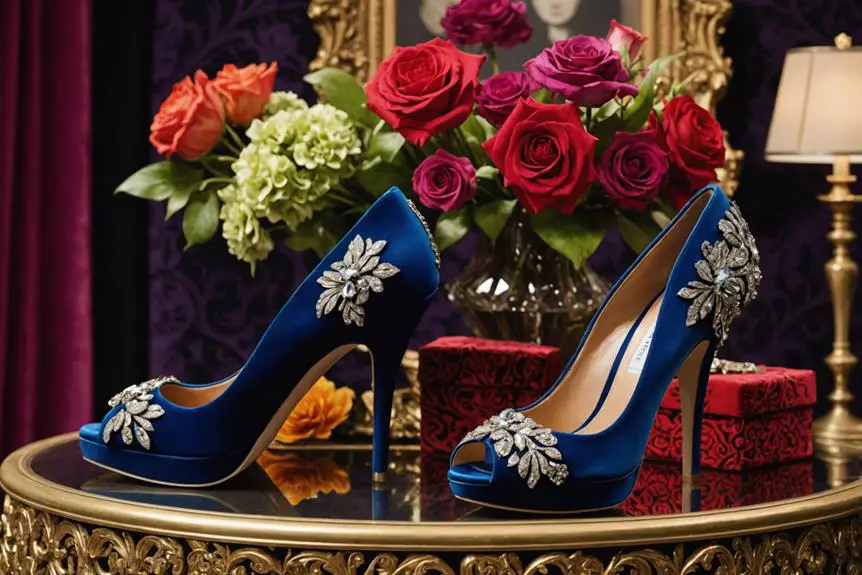In the 1930s, men's cigarette holders were more than just smoking accessories; they symbolized sophistication during a challenging economic period. You'd see these elegant items in the hands of Hollywood icons and political figures, showcasing their status and style. The holders not only elevated the act of smoking but also offered practical benefits like preventing ashes from spilling. Crafted from luxurious materials under the influence of Art Deco, these pieces became essential in nightlife and social gatherings. Understanding the allure of these objects reveals a fascinating intersection of fashion, culture, and identity in a transforming society.
Cultural Context of the 1930s
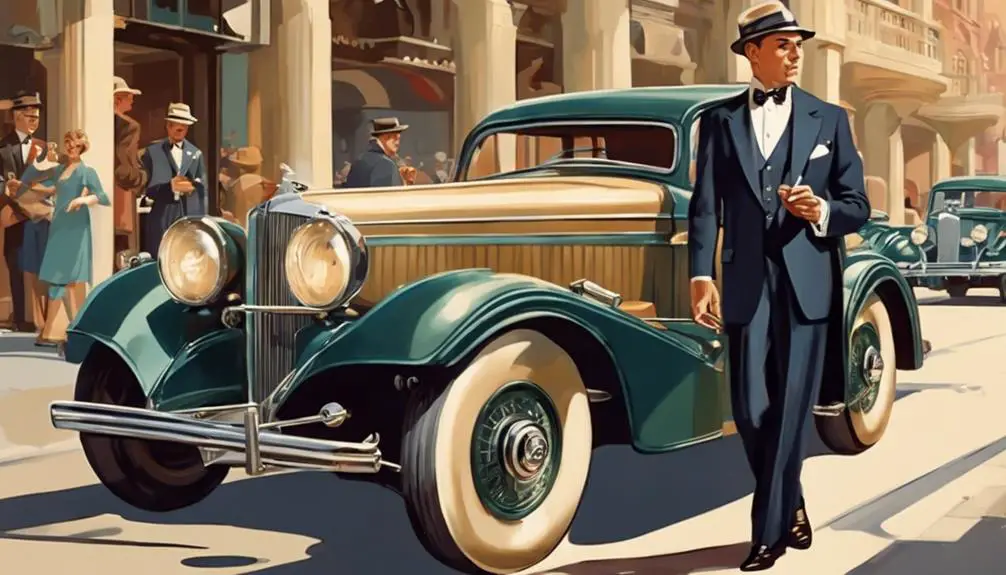
The 1930s, shaped by the shadows of the Great Depression, saw a fascinating interplay between economic struggle and social aspiration, particularly in how men expressed their identities. In this turbulent era, cigarette holders emerged as more than mere accessories; they became symbols of sophistication and status. Despite widespread economic hardships, men sought to embody a sense of elegance and confidence, often utilizing cigarette holders to project an image of glamour reminiscent of Hollywood icons like Franklin D. Roosevelt and Enrico Caruso.
The allure of these cigarette holders was amplified by their Art Deco design, characterized by bold geometric shapes and luxurious materials like gold and silver. This aesthetic reflected a yearning for refinement, even when financial stability was elusive. As smoking became increasingly normalized in social settings, men wielded cigarette holders at gatherings and parties, reinforcing their cultural relevance.
Moreover, the rise of public relations and marketing strategies glamorized smoking, positioning it as an essential accessory for the modern man. Within this framework, the cigarette holder transcended its functional purpose, embodying a complex narrative of aspiration, identity, and the pursuit of elegance amid adversity.
Purpose and Functionality
While traversing the social landscape of the 1930s, men found that cigarette holders served multiple practical purposes beyond mere aesthetics. These Long Cigarette Holders were essential for maintaining dignity and style in a time when formal dress codes were prevalent. You'd appreciate how these holders enhanced the smoking experience while keeping you polished and refined. Consider the following benefits:
- Prevented ash from falling on elegant clothing, protecting your refined attire.
- Reduced inhalation of tobacco flakes, ensuring a smoother smoking experience.
- Minimized direct contact with the cigarette, keeping your hands clean.
- Cooled the smoke, making it more pleasant to inhale and enjoy.
- Enhanced personal style, often featuring luxurious materials like gold.
In this era, the cigarette holder wasn't just a smoking accessory; it was a statement of sophistication and social standing. By using a Long Cigarette Holder, you projected an image of wealth and taste, while simultaneously adhering to the social norms of your time. Consequently, these holders were not only functional but also integral to how men navigated social interactions, reinforcing a refined lifestyle amidst the complexities of the 1930s.
Design Aesthetics and Materials
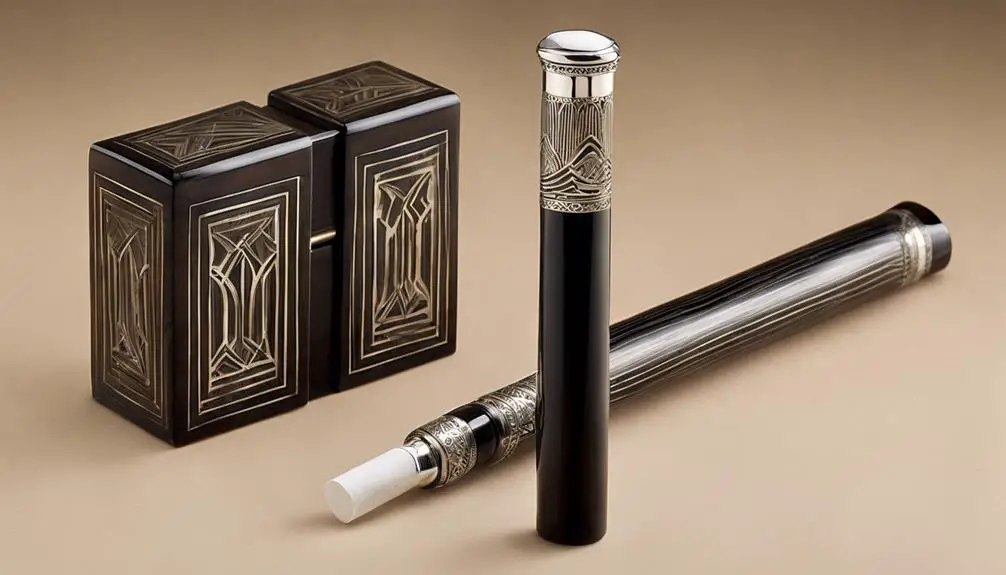
Cigarette holders in the 1930s often showcased a remarkable blend of design aesthetics and luxurious materials, elevating them from mere smoking tools to symbols of sophistication. The era's Art Deco movement heavily influenced these designs, emphasizing bold geometric shapes and intricate detailing that spoke to modernity and elegance. Crafted from high-quality materials like gold, silver, and tortoiseshell, these holders reflected a level of craftsmanship that matched their owner's social status.
The lengths of cigarette holders varied, with longer designs reserved for formal occasions, while shorter ones catered to more casual settings. This versatility allowed you to express your style while adhering to social norms. Decorative elements such as enamel inlays and gemstone accents transformed these holders into fashionable accessories, seamlessly complementing your attire.
Notable manufacturers like Cartier and Dunhill produced exclusive cigarette holders that not only served a practical purpose but also symbolized wealth and status among affluent men. This combination of artistry and luxury made cigarette holders essential fashion statements, illustrating how smoking culture intertwined with societal values and personal identity during the 1930s.
Social Settings and Usage
Enhancing social gatherings, men's cigarette holders became essential accessories in the 1930s nightlife, particularly in nightclubs and cocktail parties. These elegant items transformed smoking into a sophisticated art form, embodying the modern gentleman's lifestyle. When you attended a formal occasion, carrying a cigarette case and donning evening gloves elevated your status, reflecting both style and social standing.
Using a cigarette holder served practical purposes as well. They:
- Prevented ash from falling on your clothing.
- Cooled the smoke before inhalation, enhancing the experience.
- Served as a conversation starter, showcasing your taste.
- Added an air of refinement to your overall attire.
- Linked you to the glamorous world depicted in Hollywood films.
Prominent figures, from actors to socialites, popularized the use of these holders, making them symbols of sophistication and modernity. The varied designs, crafted from materials like gold, silver, and Bakelite, allowed you to express your personal style while maneuvering elite circles. Therefore, in the vibrant social milieu of the 1930s, men's cigarette holders weren't just accessories; they were integral to crafting an image of elegance and charm.
Notable Figures and Their Influence
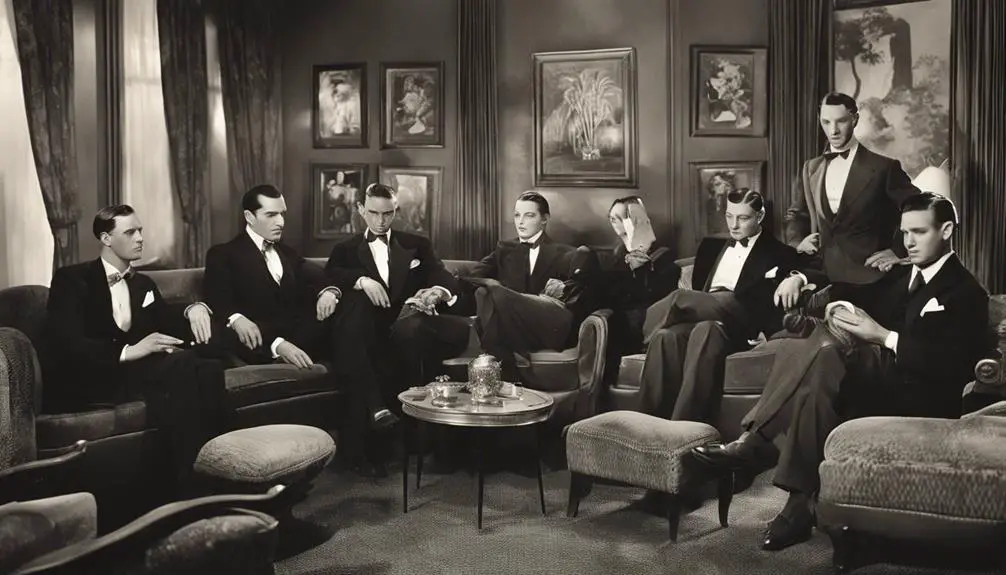
The allure of men's cigarette holders in the 1930s extended beyond mere functionality; they became a hallmark of sophistication, influenced greatly by prominent figures of the era. Icons like Franklin D. Roosevelt and Enrico Caruso often flaunted their cigarette holders in public, enhancing their sophisticated images and encouraging other men to smoke with style. The cigarette holder quickly became considered an essential accessory, symbolizing elegance among elite men.
Noteworthy figures such as Vladimir Horowitz and Ian Fleming incorporated cigarette holders into their personal aesthetics, further embedding them in the cultural fabric of the time. Hunter S. Thompson's flamboyant use of the holder as a filter illustrates its practical aspect while still showcasing a certain flair. The artistic designs, often inspired by the Art Deco movement, featured craftsmanship from prestigious brands like Cartier, appealing to affluent buyers who valued both style and status.
This cultural significance of cigarette holders in the 1930s reflects a blend of modernity and social hierarchy, transforming them into fashionable accessories that defined elite social circles and public appearances. Men adopted these stylish implements not just for smoking, but as statements of sophistication and taste.
Evolution of Smoking Attitudes
Amidst the backdrop of the 1930s, a notable shift in smoking attitudes emerged, reflecting broader social changes and evolving gender roles. This decade brought increasing acceptance of smoking among both men and women, especially in urban centers like New York. After the women's suffrage movement and the 19th amendment, women began to smoke publicly, signaling their newfound independence and modernity.
Here are key elements of this evolution:
- Fashion Statement: Cigarette holders became stylish accessories for men, merging elegance with smoking culture.
- Public Acceptance: Smoking in public settings became a social norm, showcasing sophistication.
- Marketing Influence: Tobacco companies promoted smoking as a symbol of liberation, targeting both genders.
- Social Ritual: Cigarette holders served a practical purpose, preventing ash from soiling formal attire.
- Cultural Shifts: The Jazz Age fostered an atmosphere where smoking was linked to freedom and modern life.
In this vibrant era, smoking transformed from a taboo to a celebrated act, intertwining with the identities of both men and women, thereby reshaping societal perceptions around the act itself.
Legacy of Cigarette Holders
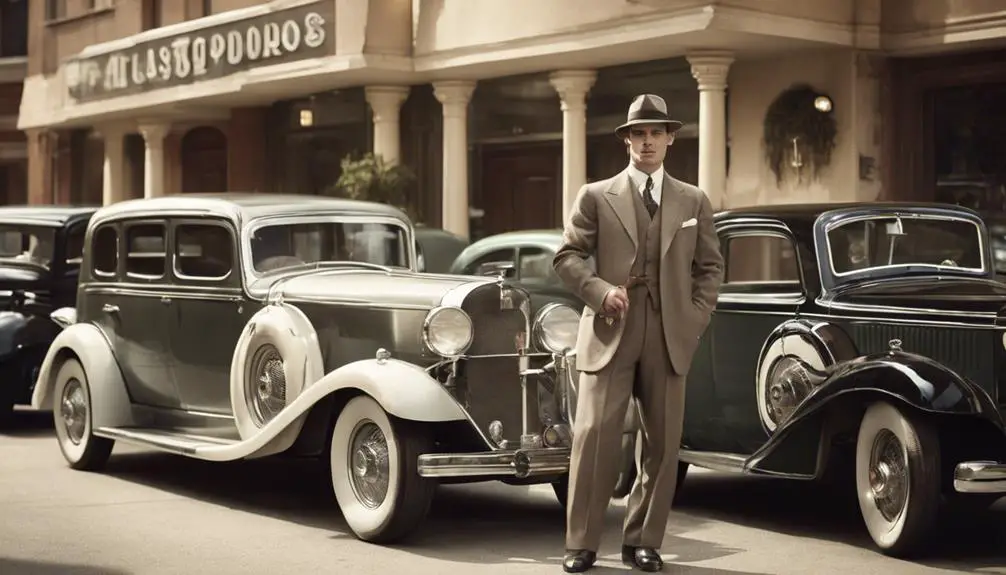
Elegance and sophistication defined the legacy of cigarette holders, particularly for men during the 1930s. Initially symbols of social status, these accessories evolved into icons of Hollywood glamor. Male stars like Enrico Caruso and Franklin D. Roosevelt popularized cigarette holders, embedding them in the fabric of popular culture. You'll notice how their sleek designs, crafted from materials like gold and tortoiseshell, reflected contemporary fashion trends, marking a man's wealth and style.
Despite a decline in popularity with the rise of filtered cigarettes, the artistry behind vintage cigarette holders remains highly regarded. Collectors now seek these items, with notable pieces fetching average prices of over $1,140 at auctions. This appreciation underscores the enduring allure of cigarette holders, celebrating their historical significance in smoking culture.
Today, you see remnants of their legacy in vintage markets, where the craftsmanship and unique designs are cherished, reminding us of a time when smoking was intertwined with elegance. Ultimately, cigarette holders not only served practical purposes but also shaped masculine identity and societal norms, leaving an indelible mark on fashion and cultural heritage.
Frequently Asked Questions
Did Men Ever Use Cigarette Holders?
Yes, men did use cigarette holders, reflecting sophistication and status. They enhanced the smoking experience while embodying cultural trends. Over time, holders became symbols of personal style, especially in elite social circles during significant historical moments.
What Was the Point of Those Long Cigarette Holders?
Those long cigarette holders served multiple purposes: they kept ash off your clothes, enhanced your smoking experience by cooling smoke, and allowed you to showcase your style and sophistication in social settings, reflecting cultural elegance.
What Is the Cigarette Holder Called?
You're referring to a cigarette holder, an accessory that enhances the smoking experience. It symbolizes sophistication, reflecting social status and personal style, while also maintaining cleanliness and elegance during a time of evolving cultural norms.
Were Cigarette Holders Popular in the 1920s?
Cigarette holders were indeed popular in the 1920s, as they symbolized sophistication and modernity. You'd see them enhancing social status, particularly among women, who embraced this trend, reflecting changing cultural norms around smoking and femininity.




